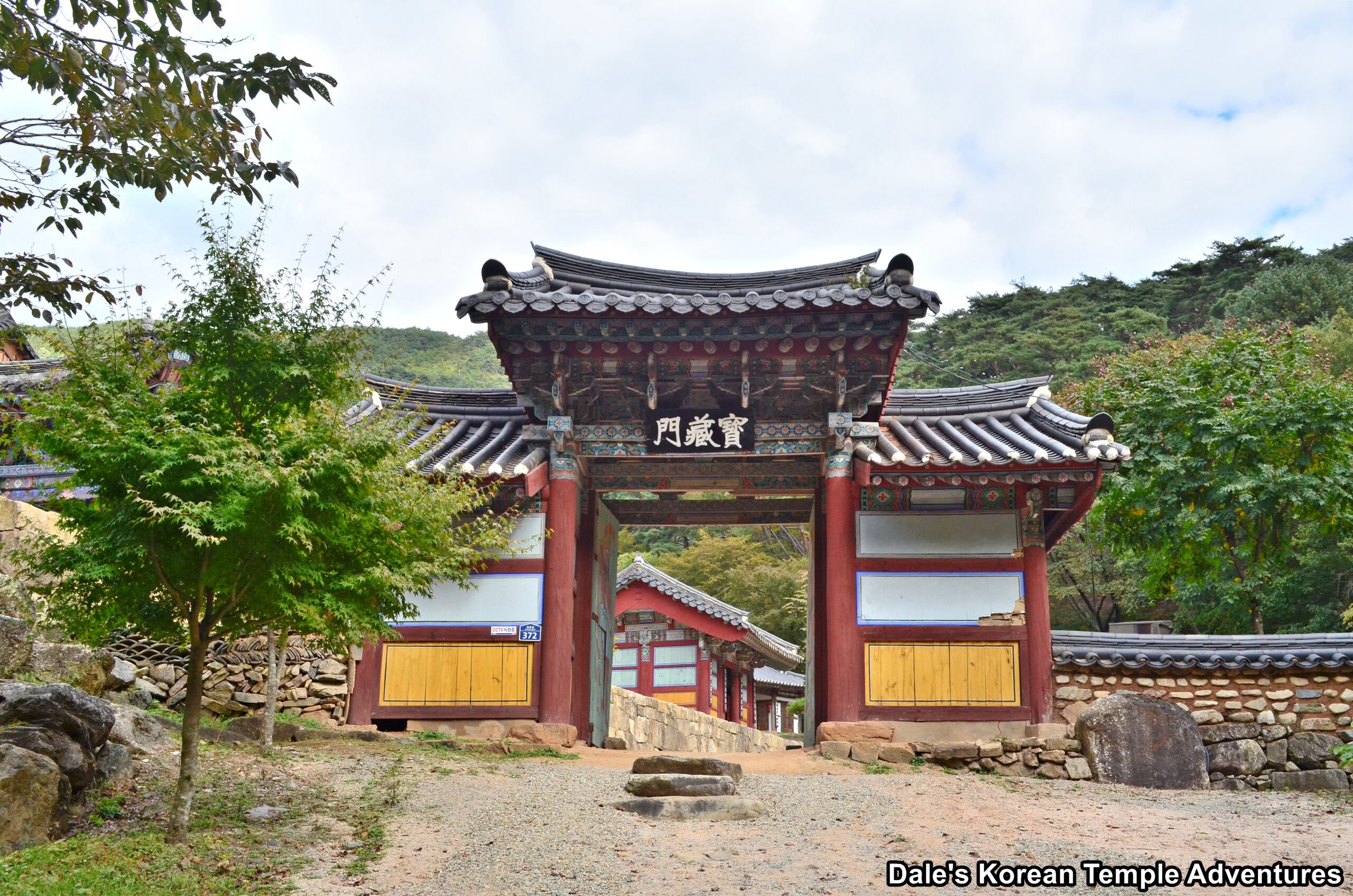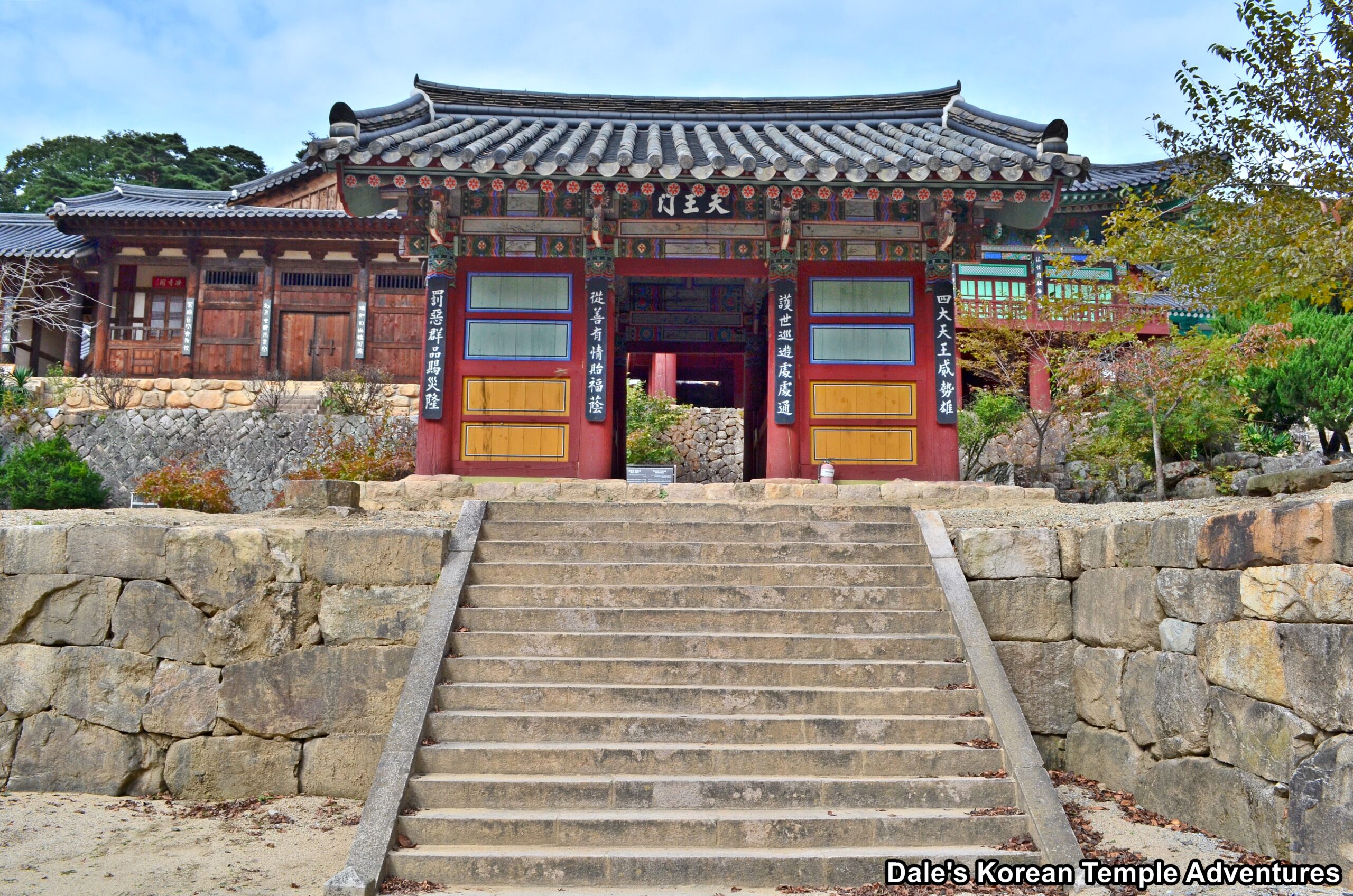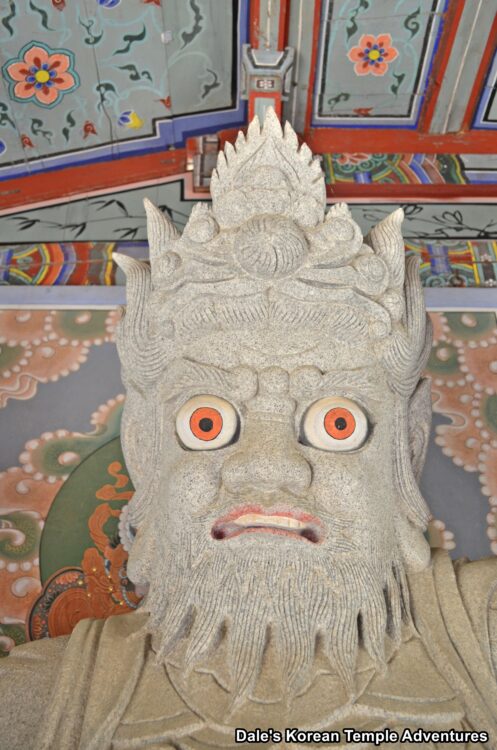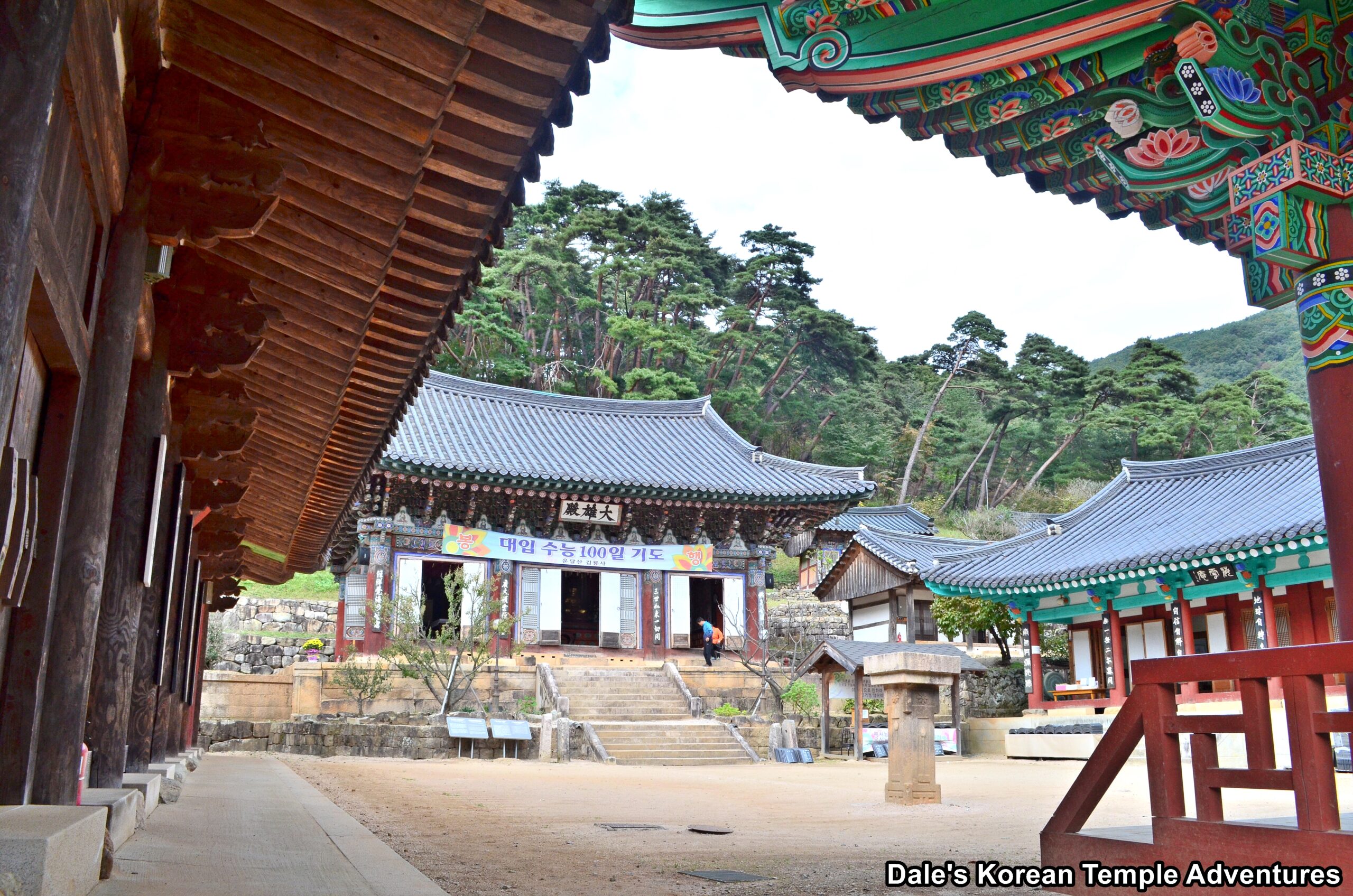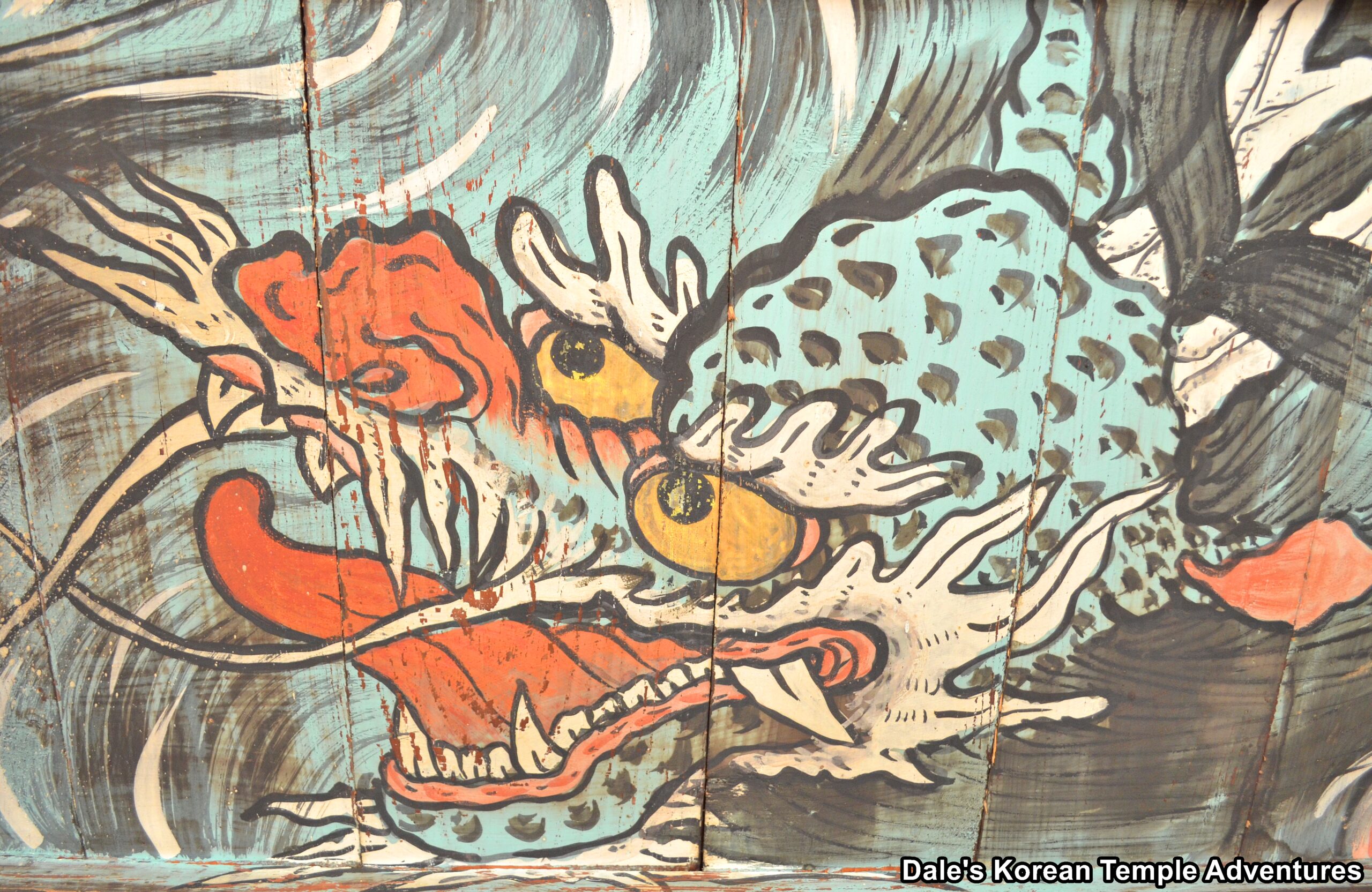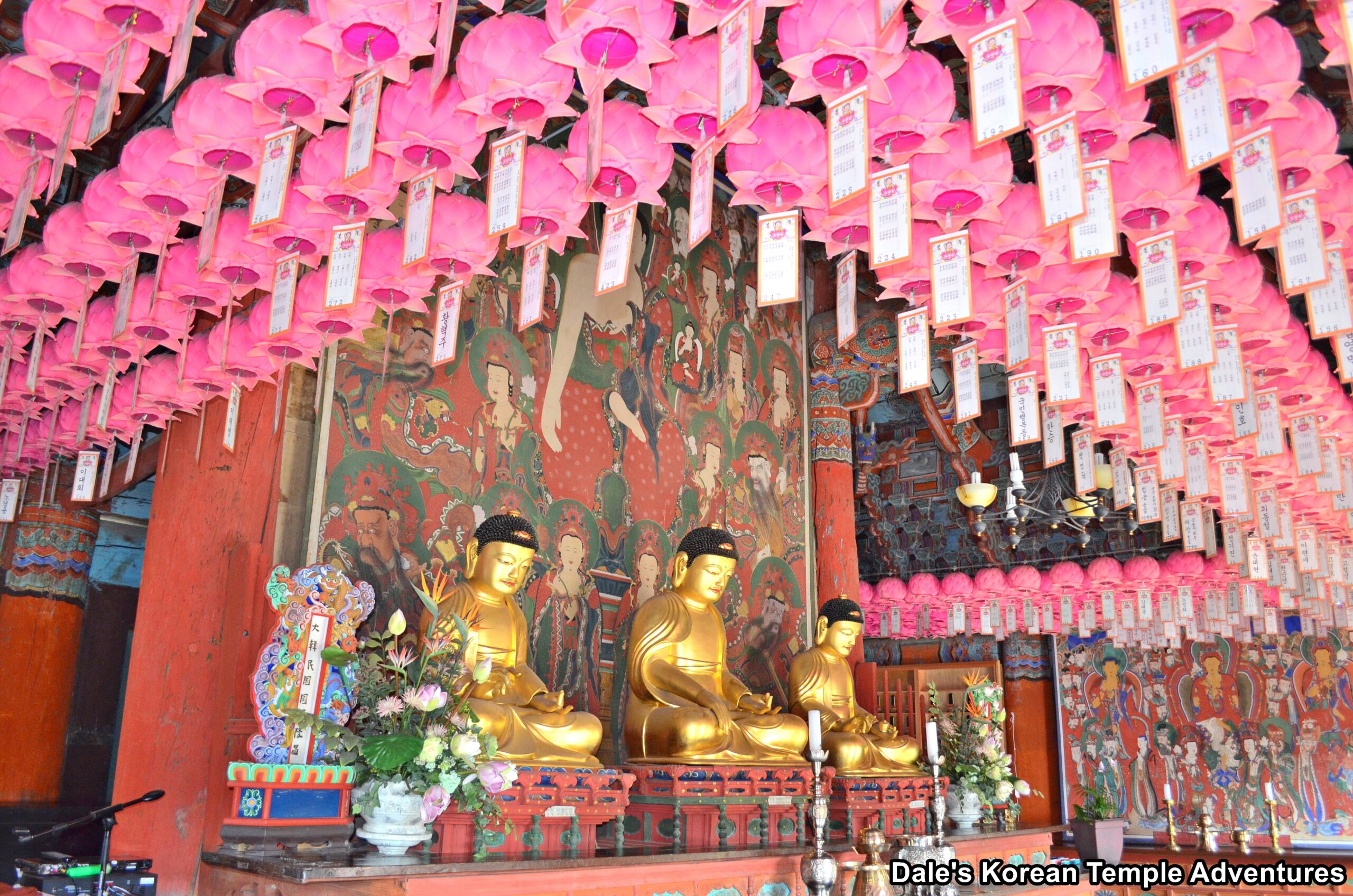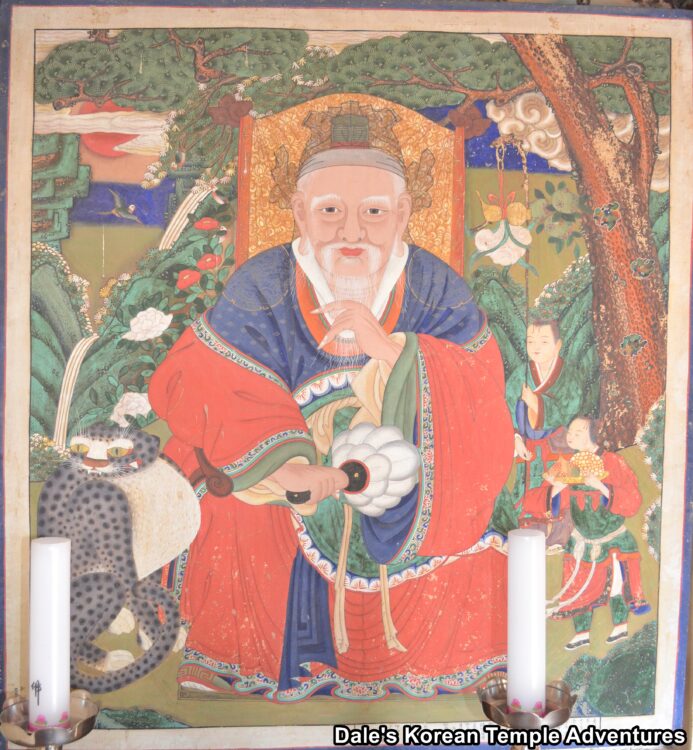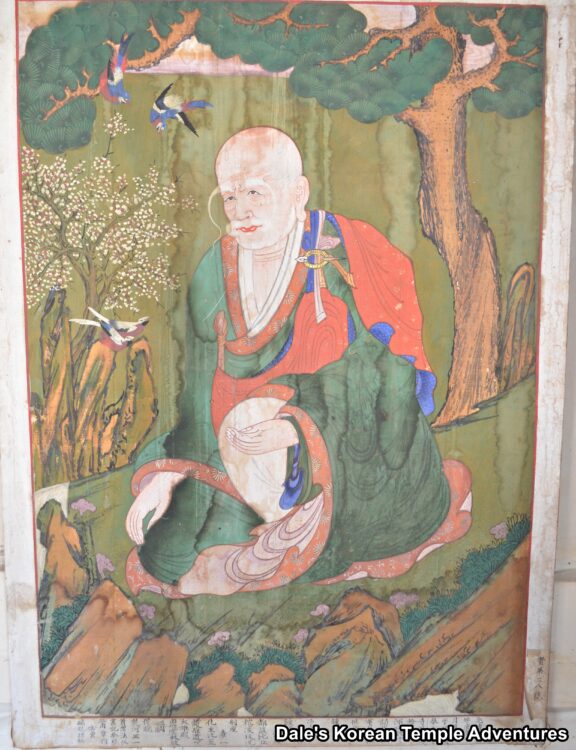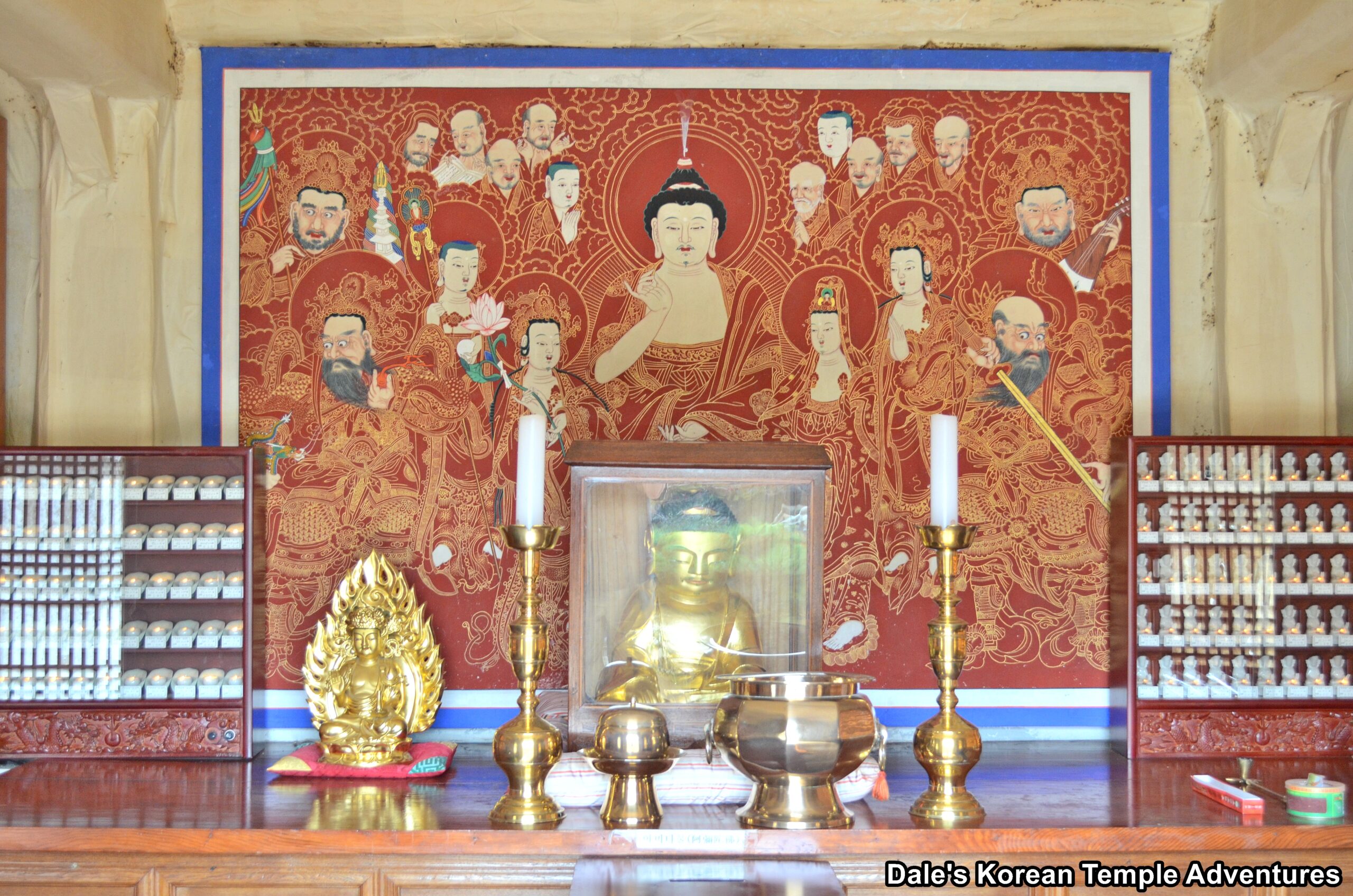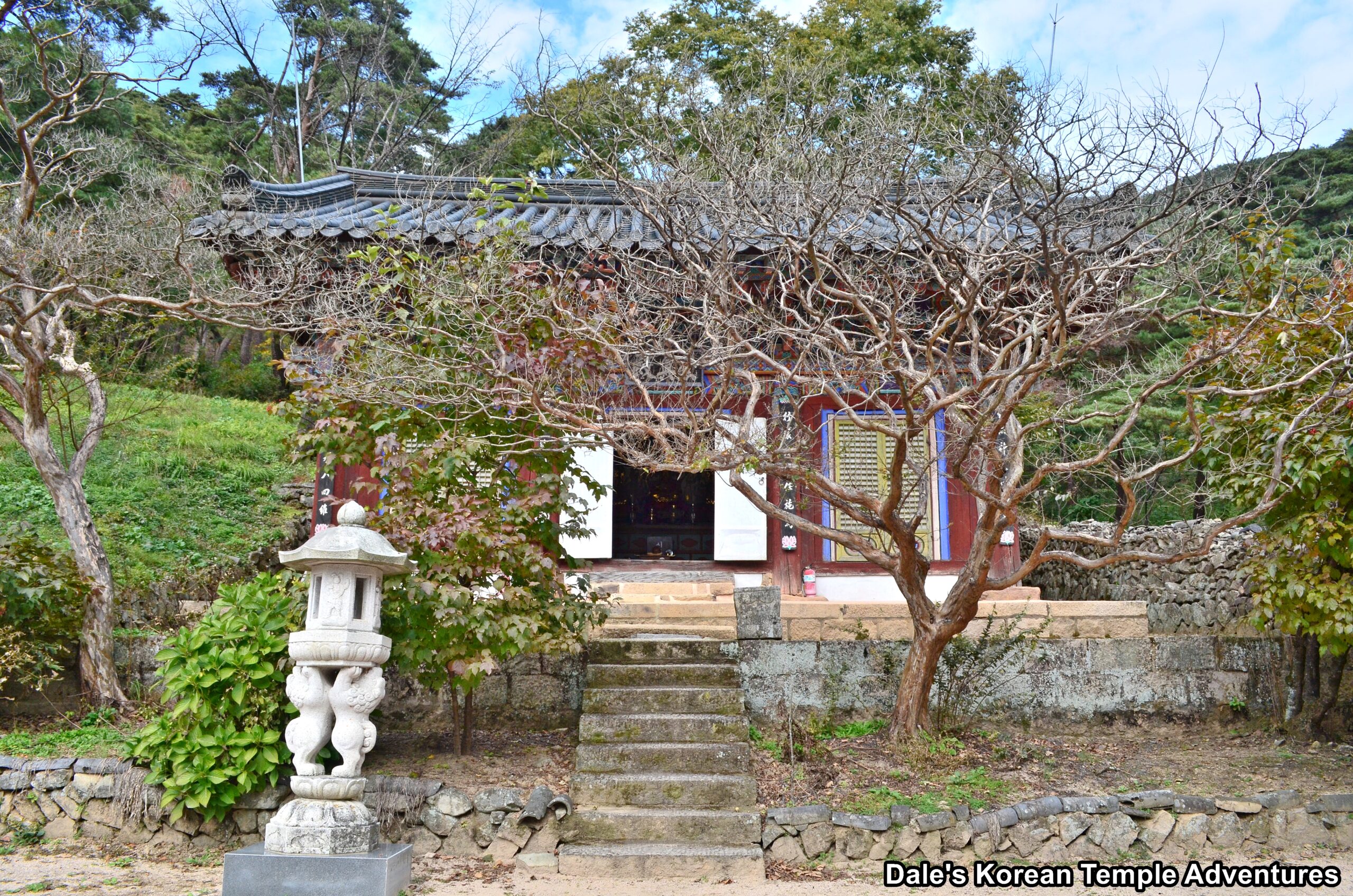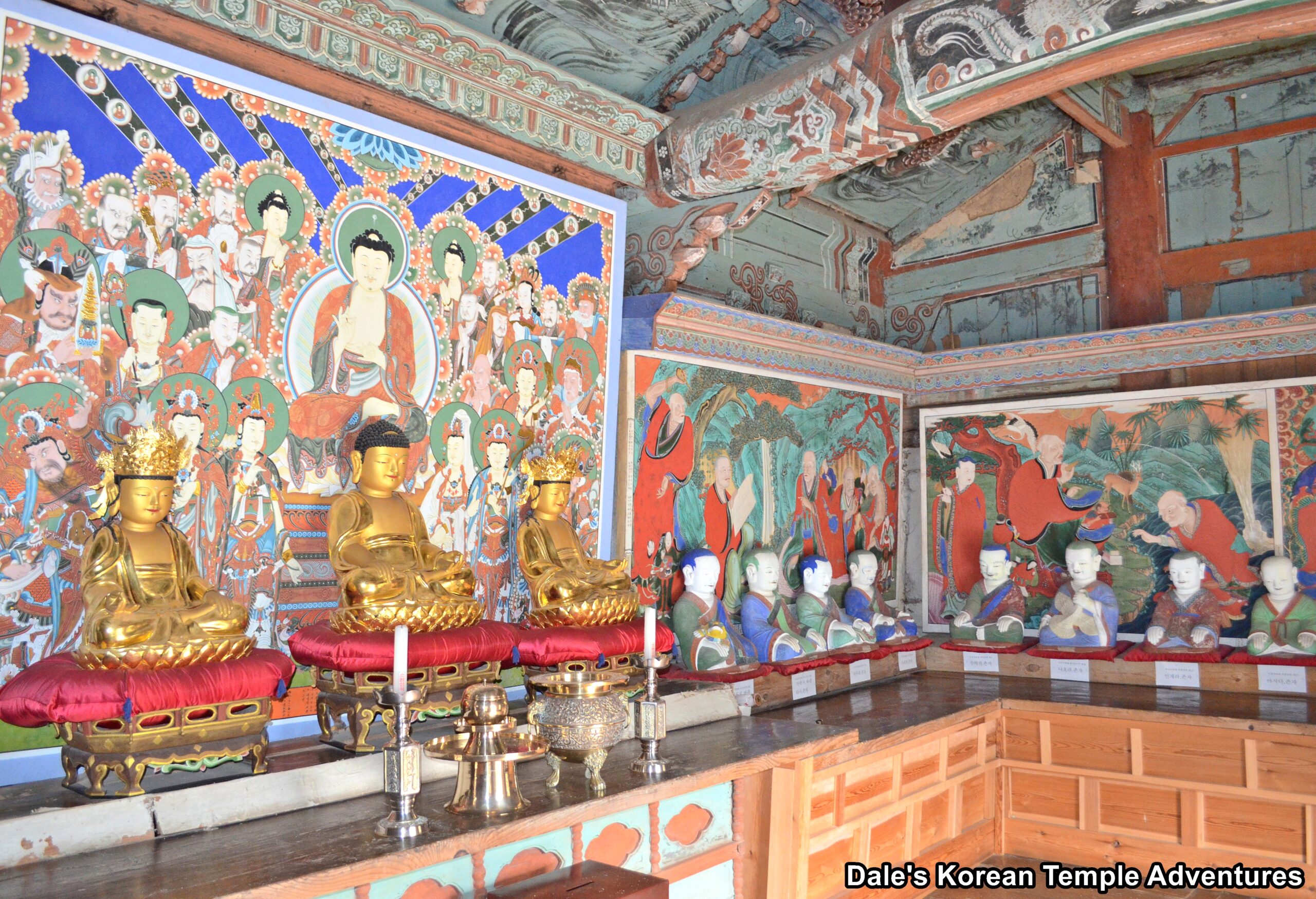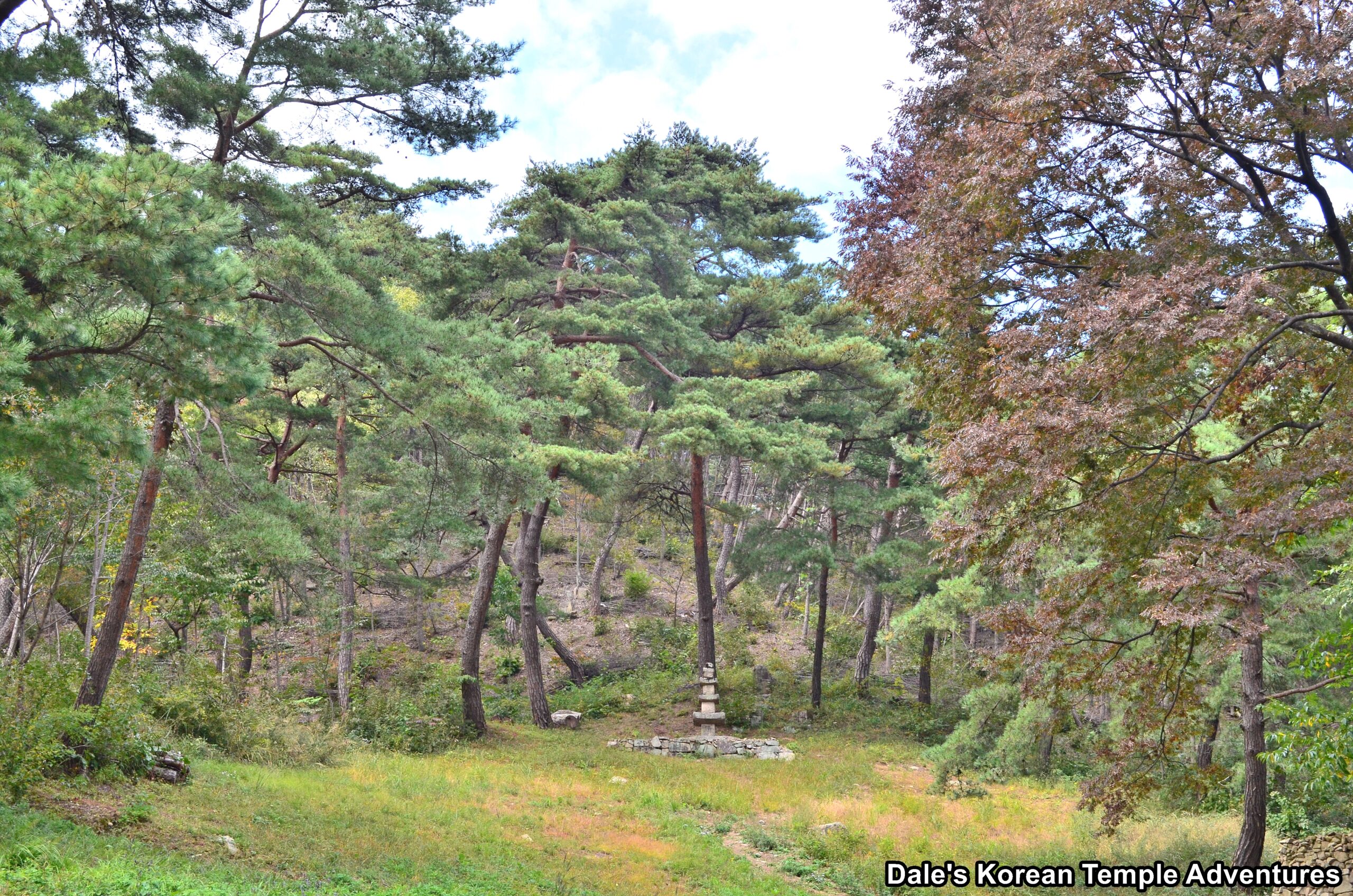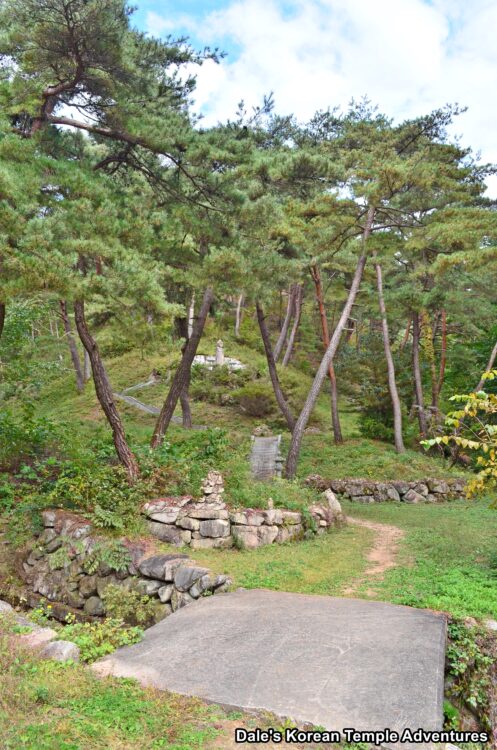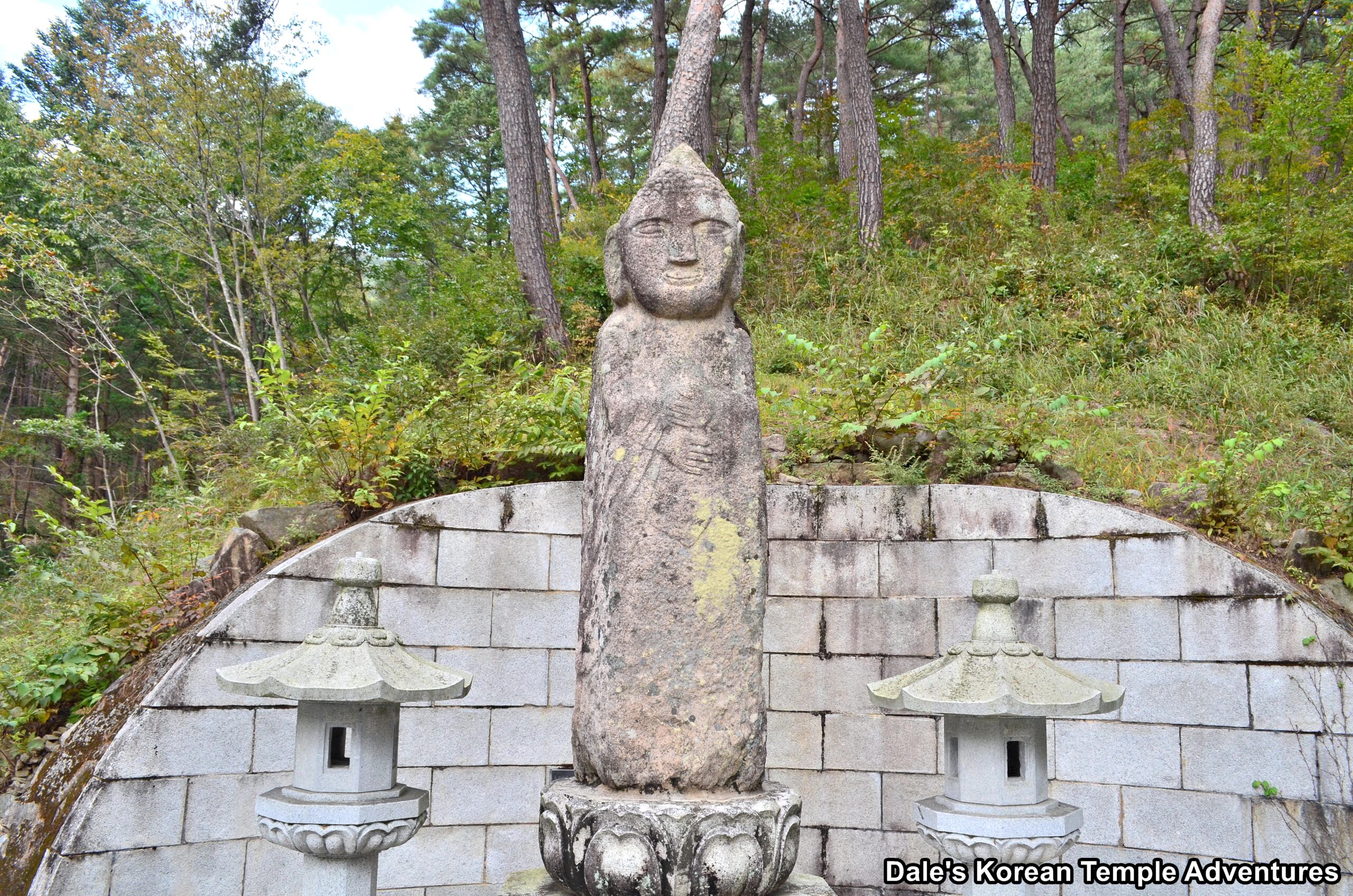Gimnyongsa Temple – 김룡사 (Mungyeong, Gyeongsangbuk-do)
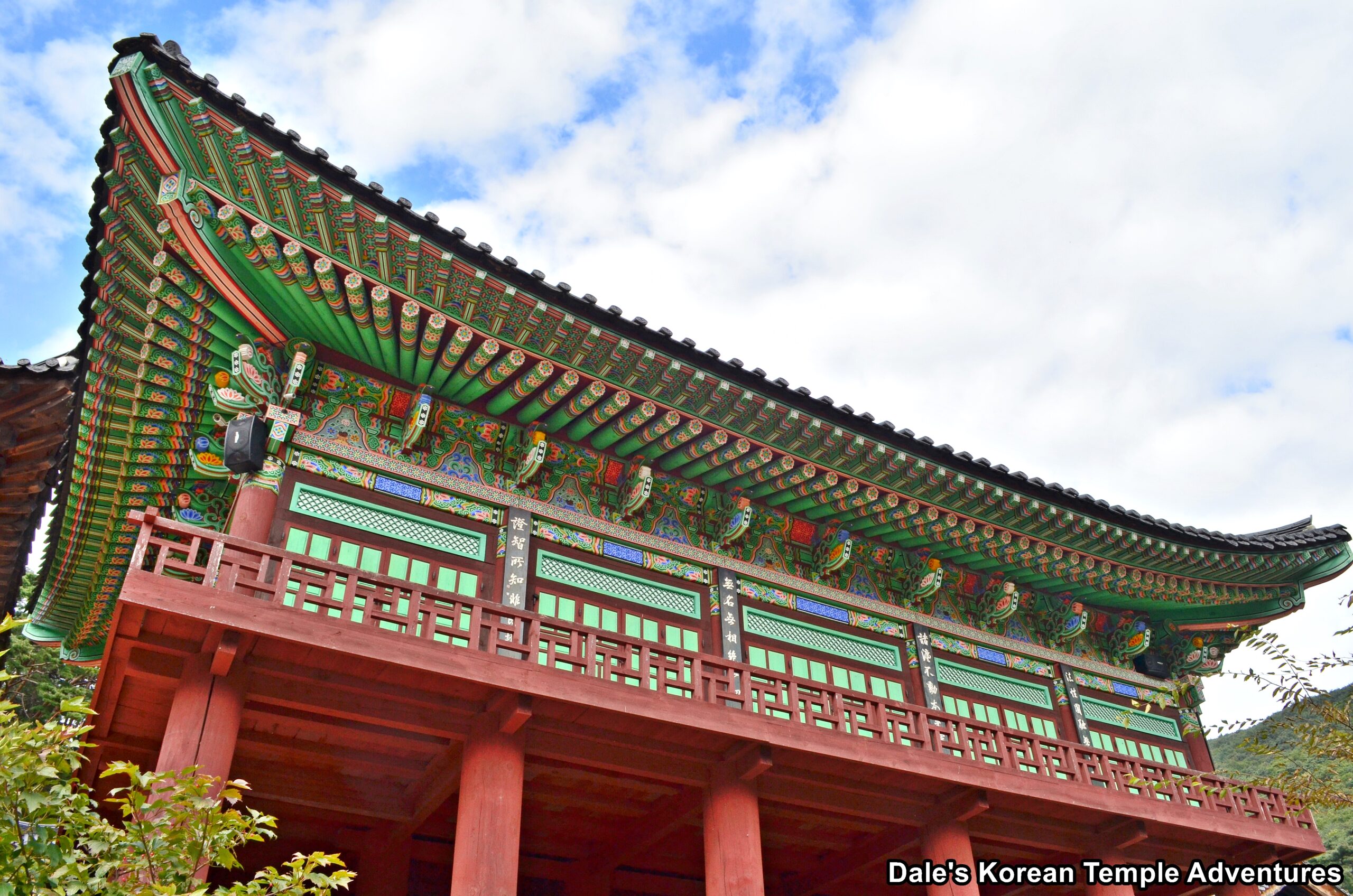
Temple History
Gimnyongsa Temple is located in Mungyeong, Gyeongsangbuk-do to the southeast of Mt. Undalsan (1,103.2 m). The temple was first built in 588 A.D. by the monk Undal-josa. Originally, the temple was named Unbongsa Temple. However, there are several legends associated with the temple, one of which, gives the temple its name. According to this legend, there was a man with the surname Kim that was the local magistrate. Kim committed a crime while in office, so he hid in the mountains under Unbongsa Temple. He would frequently visit the temple to help quell the feelings of regret that he had. During this time, Kim met a young woman. They got married and had a boy they named Yong. It was after this that the family grew rich. The local village would be named Gimnyong-ri after this family. It’s unclear as to when Unbongsa Temple was renamed Gimnyongsa Temple, but some estimate that the temple was renamed some time in the 18th century.
Very little is known about the temple until the mid-Joseon Dynasty (1392-1910), when the temple was destroyed by fire during the Imjin War (1592-1598). The temple was later rebuilt in 1624 by the monk Hyechong-seonsa. Gimnyongsa Temple was destroyed again in 1642, but it was rebuilt in 1649 by three monks: Eoryun, Mujin, and Taehyu. Then in 1998, Gimnyongsa Temple was completely destroyed by fire except the Daeung-jeon Hall.
Gimnyongsa Temple is home to one Korean Treasure, the Hanging Painting of Gimnyongsa Temple (The Vulture Peak Assembly), which is Korean Treasure #1640. It’s also home to the Gimnyongsa saryosujip (Collection of Historical Records of Gimnyongsa Temple), which is a National Registered Cultural Heritage. Gimnyongsa Temple is also home to the Manuscript of The History of Branch Temples of Gimnyongsa Temple, which is a National Registered Cultural Heritage, as well.
Temple Layout
You first approach the temple up a dusty road that’s lined with towering trees. When you come to the end of this dusty road, you’ll be at Gimnyongsa Temple. The first thing to greet you at the temple is the Iljumun Gate with a ferocious pair of paintings dedicated to Narayeon Geumgang and Miljeok Geumgang (Heng and Ha) on them. Past this first entry gate, you’ll next be greeted by the Cheonwangmun Gate. Uniquely, the statues of the Four Heavenly Kings inside the Cheonwangmun Gate are made from stone. And the eyes of the Four Heavenly Kings are literally popping out of their heads with intensity.
Just past the Cheonwangmun Gate is a small pond that has a small stone dragon at the base of the pooling water that snakes around in the pond’s depths. To the immediate left of this diminutive pond is a rather crude carving of the Buddha on a small stone. And to the left of this stone carving is the temple’s Jong-ru (Bell Pavilion). The Jong-ru houses a beautifully crafted Brahma Bell. And all of this is backed by a large natural wood structure called the Eunghyang-gak.
It’s past this collection of structures at Gimnyongsa Temple that you’ll next come to the Boje-ru Pavilion. To the right of the Boje-ru Pavilion is the entryway to the temple courtyard at Gimnyongsa Temple. Straight ahead of you is the Daeung-jeon Hall. The Daeung-jeon Hall dates back to 1649. There are very few paintings surrounding the exterior walls of the main hall; however, there are a pair of masterfully executed murals of dragons on either side of the flanking walls. As for the interior, and resting on the main altar, are a triad of statues centred by Seokgamoni-bul (The Historical Buddha). This statue is flanked by Amita-bul (The Buddha of the Western Paradise) and Yaksayeorae-bul (The Buddha of the Eastern Paradise, and the Medicine Buddha). To the left of the main altar is a well-populated Shinjung Taenghwa (Guardian Mural). And if you look up towards the ceiling of the Daeung-jeon Hall, you’ll find intricately painted floral patterns and floating Bicheon (Flying Heavenly Deities).
Just to the rear of the Daeung-jeon Hall, and to the right, are three more temple shrine halls at Gimnyongsa Temple. The first of the three is the Geumryun-jeon Hall. Another name for the Geumyrun-jeon Hall is the Samseong-gak Hall. And this shaman shrine hall houses three beautiful shaman murals dedicated to Chilseong (The Seven Stars), Dokseong (The Lonely Saint), and Sanshin. All three are beautiful and older in composition. The most amazing of the three is the Sanshin (Mountain Spirit) painting, who sits atop a throne and is joined by a cartoonish-looking purple tiger.
To the right of the Geumryun-jeon Hall is the Geukrak-jeon Hall. Sitting on the main altar is a squat-looking statue dedicated to Amita-bul (The Buddha of the Western Paradise). And this statue is backed by a beautiful red painting of the Buddha of the Western Paradise.
The third, and final, shrine hall, is the Eungjin-jeon Hall, which is dedicated to the Nahan (The Historical Disciples of the Buddha). Sitting on the main altar inside this hall are a triad of statues centred by Seokgamoni-bul (The Historical Buddha). This triad is backed by a vibrant mural that’s populated by Buddhas, Bodhisattvas, and guardians. To the right and left of the main altar are a collection of beautiful statues and murals of the Nahan. The murals are especially beautiful. On the far right wall is yet another mural dedicated to Dokseong (The Lonely Saint). Hanging on the far left wall is another Shinjung Taenghwa (Guardian Mural). The ceiling of this hall is filled with wood sculptures like fish and dragons just above the main altar.
The final things you can see at Gimnyongsa Temple, and just to the right of the Eungjin-jeon Hall, are a pagoda and a statue. The first of the two is a stone pagoda that’s situated just a little up the mountain. From this vantage point, the pagoda overlooks the entire temple grounds. Just a little further along, and up a well manicured pathway, is an older stone statue dedicated to Yaksayeorae-bul.
How To Get There
To get to Gimnyongsa Temple, you’ll first need to get to the Jeomchon Train Station. Once you get to this local train station, you’ll need to walk 1.1 km to the Mungyeong Town Bus Terminal. The bus that goes to Gimnyongsa Temple has no name; instead, look for the bus that says “점촌 – 김용사” on it. The bus ride will take about one hour, or twenty-four stops. The bus will drop you off at the entrance to Mt. Undalsan. From the bus stop, you’ll need to walk an additional 1.5 km, or twenty minutes, to get to the temple.
Overall Rating: 7.5/10
I really enjoyed my visit to Gimnyongsa Temple. The main highlight, besides the beautiful scenery, is the Daeung-jeon Hall. Both the interior and exterior of the main hall are filled with beautiful murals. Also of note are the shaman murals housed inside the Geumryun-jeon Hall. While Gimnyongsa Temple is little known, and somewhat difficult to get to, it’s well worth a visit.
